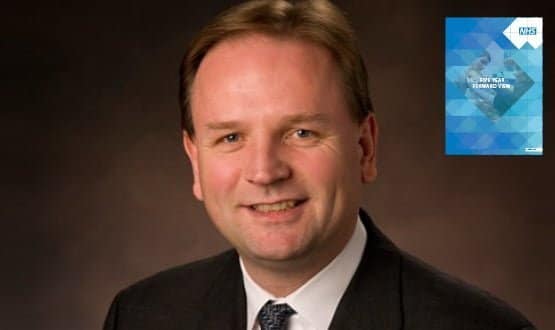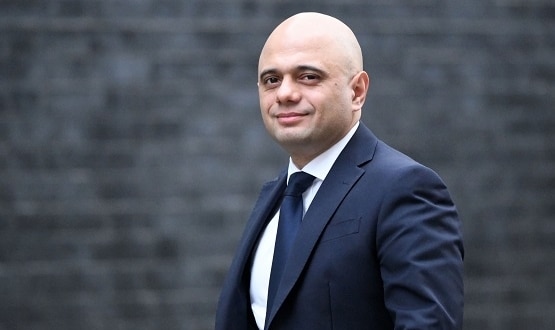The man with the plan

Simon Stevens must feel like its déjà vu all over again. Back in 1999, when he was an advisor to health secretary Frank Dobson, there was a massive financial crisis in the hospital sector and nurses were threatening legal action over pay.
Now it’s 2014, and he’s the new chief executive of NHS England, policy wonks and financial experts are warning that the NHS is falling into a financial black hole; and nurses are holding demonstrations to protest about pay.
Of course, there are differences. The earlier financial crisis was effectively solved when the NHS barely made it through a flu outbreak, and Prime Minister Tony Blair went on breakfast television to promise to raise health funding to European levels.
Stevens joined the new health secretary, Alan Milburn, in writing the ‘NHS Plan’ for reform that was supposed to make sure the health service made good use of the money. And over at the Treasury, Chancellor Gordon Brown asked a former banker, Sir Derek Wanless, to come up with some proper projections for just how much cash the NHS would need in the future.
This time around, Stevens has had to come up with the plan first, in the form of the ‘Five Year Forward View’ that was published this morning.
In effect, it challenges whatever government takes power in May to come up with both pump-priming cash and additional funds. But it also, in effect, challenges any future government to finally engage with the Wanless report; including the IT bits.
Efficiency is not enough; we’ve proved it
The Five Year Forward View makes several references to Wanless, which is hardly surprising, as it was the last, full-on attempt to ask how much money the NHS really needs, taking various factors into account.
In 2002, Wanless came up with three scenarios, in which the NHS made more or less progress on tackling public health problems, adopting more modern and effective treatments, and working more efficiently.
Making more use of the kind of IT that had transformed the banking sector was a key part of the Wanless efficiency package, and as such it helped to push the Department of Health into creating the National Programme for IT.
Over the years, King’s Fund and the Institute for Fiscal Studies have tried to look at how the NHS is doing on the Wanless criteria, and have found that it has slipped a long way behind the most optimistic – or ‘fully engaged’ scenario.
Indeed, it is the gap between the fully engaged scenario and the actual demand on and performance of the NHS that gives rise to the ‘Nicholson Challenge’. Back in 2008, when the former chief executive of the NHS, Sir David Nicholson, warned that the gap was opening up, it was £20 billion.
Nicholson urged the NHS to close it by using quality, innovation, productivity and prevention initiatives, instead of the traditional, “salami-slicing”, approach of rationing treatment, extending waiting lists, and cutting back on maintenance and investment.
Since then, the NHS has managed to deliver QIPP savings, but mainly by holding down the tariff and wages. In other words, it’s tried to ‘do’ Wanless by only doing the ‘efficiency’ bit; and without using some of the tools – including IT – that he suggested using.
Public health; there’s an app for that
In the Five Year Forward View, Stevens suggests that it should try ‘doing’ the other bits as well. This is clearest in the second chapter, where the review discusses the Wanless “fully engaged” scenario in relation to public health.
It points out that since 2002, things have got significantly worse, with one in five people still smoking, a third drinking too much, and almost two thirds overweight or obese.
Hence the report’s call for the NHS to re-engage with public health, which has gone down so badly with sections of the tabloid press and callers to radio phone-ins.
Hence also its call for the NHS to use digital technology to “engage” and “empower” patients, by giving them access to their own records (a wearily familiar pledge), and an “expanding set of NHS accredited health apps that patients will be able to use to organise and manage their own health and care.”
From primary care to acute; or vice-versa
However, it also comes through in the third chapter, which calls for “new models of care” to really get into the efficiency piece.
The Five Year Forward View says a “consensus is emerging” that integrated care is the way forward. It then tries to strike a balance between unleashing another massive re-organisation on the NHS to achieve this, and leaving healthcare economies alone to come up with bright ideas; or not.
Or, as it puts it: “While the answer is not one-size-fits-all, nor is it simply to ‘let a thousand flowers bloom’.” Instead: “We intend to support and stimulate the creation of a number of major new care models that can be deployed locally across England.”
The two main models proposed are, in effect, to let GP practices expand so they not only become large, group practices, but take on “the majority of outpatient consultations and ambulatory care outside of hospitals”; or even “the running of local community hospitals”.
The other model goes in the other direction, and suggests that hospitals could expand to “open their own GP surgeries” and take on primary care work.
In both cases, the report suggests that ‘multi-speciality community providers’ and ‘primary and acute care systems’ could eventually take on budgetary responsibility for their registered patients.
This would make them look rather like US healthcare management organisations; which Stevens knows well, having worked for United Health for a decade, after his time as a health and prime ministerial advisor.
IT’s in there, but the roadmap’s still being developed
These models will require good information sharing; not just to make them work, but to power the new funding models that they may support. That will mean good IT.
In its fourth chapter, the Five Year Forward View turns to IT and promises that the NHS will finally “exploit the information revolution” – although it certainly does not want a new NPfIT.
In fact, it can’t even bring itself to use the initials, saying instead that there won’t be “highly centralised national procurements and implementations.”
On the other hand, it does not want to “oscillate” back to the pre-NPfIT era of “letting a thousand flowers bloom” (the origin of what seems to be one of Stevens’ favourite phrases, given that it turns up three or four times in a 41 page report). Instead, it comes up with something that it is tempting to call a third way.
The review says that “nationally, we will focus on the key systems that provide the ‘electronic glue’ that enables different parts of the health service to work together” while “other systems will be for the NHS to decide upon and procure, as long as they meet nationally specified interoperability and data standards.”
It would be nice if It would be nice if the review then went on to explain what systems will be provided nationally and how the interoperability and data standards will be decided, promoted, or – if all else fails – mandated.
Also, what – if any – market making activity NHS England will undertake to make sure that appropriate systems are available; and that MCPs and PACS buy them.
Instead, it says the National Information Board will publish a set of ‘road maps’ laying out “who will do what to transform digital care” later in the year.
These roadmaps sound suspiciously like the chapters of the IT strategy that has been repeatedly promised and delayed since last July, when the commissioning board issued its ‘integrated digital care record’ guidance to support bidding to the first round of the tech fund.
Still the review recognises the need for “fully interoperable health records, so that patients’ records are largely paperless.” It goes beyond present access pledges, by saying that patients will not only have “full access to these records” but be able to “write to them”.
Without mentioning the dread phrase care.data, it says they will be used to promote research, commissioning, and new test beds for innovative ideas, such as new ways of working with telehealth. But patients will be able to opt-out.
Time’s flying
The three big questions that now face Stevens, the Five Year Forward View, the NHS, and the people who depend on it, are: can it be done, can it be done in time, and will it be enough?
The review addresses the last point. In a very Wanless-style passage, it runs the numbers against the current, forward projections of the ‘Nicholson Challenge’ by the King’s Fund and IFS, which take the NHS funding gap to £30 billion by 2020-21.
It sets out a ‘scenario one’ in which the NHS’ budget remains flat and it delivers its long-run productivity gain of 0.8% a year. In this scenario, the NHS is stuffed. “The combined effect is that the £30 billion gap is cut by a third to £21 billion.”
In ‘scenario two’, funding remains flat, but the NHS delivers efficiencies of 1.5% a year. In this scenario, things don’t look good. “The combined effect is that the £30 billion gap is halved, to £16 billion.”
In ‘scenario three’, the NHS gets more money – for “infrastructure and operating investment” and uses this to “move to new care models and ways of working [that] in turn enable demand and efficiency gains worth 2%-3% net a year.” And, hooray, “the £30 billion gap is closed by 2020-21.”
It has less to say about whether it can be done in time. Which must be a doubt, given that the NHS could face a financial crisis this winter, there are six months to the general election, and even Labour is only promising a fraction of the pump-priming that will be needed.
And, in the end, it has only optimism to offer that national leadership, a modern workforce, “harnessing the information revolution” and coming up with some better ways to trial innovation will drive the NHS through the kind of reform programme that it failed to start in 2002 or 2008.
Stevens himself says the NHS is now “at a crossroads.” It’s tempting to say that it often is; and nobody knows that better than he does. But this time, he’s probably right.




